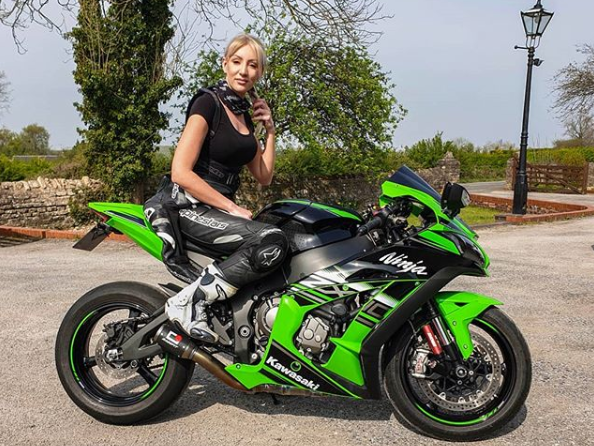NIKEN at The Giro
The Yamaha NIKEN GT has just been appointed as the official “moto” for the Tour de France and the Giro d’Italia. Tom Isitt went to Italy to check its Grand Tour credentials

Tom Isitt is a freelance motorcycle, cycling and powerboating journalist with 30 years experience breaking bones and expensive machinery. He has written a couple of motorcycle books, tested several hundred different bikes, and now spends most of his time cycling up mountains in the Alps and Pyrenees that would be a lot more fun if he did it on an R1.
THE NIKEN GT represents another attempt by Yamaha to re-invent the sports-tourer, this time with its Leaning Multi Wheel technology. Pretty much everyone who has ridden one is a convert, but can Yamaha persuade a conservative market that LMW vehicles are the future? Or at least the future for some people.
You have to hand it to Yamaha, they’re not afraid to think outside the relatively constrained box that is modern motorcycle design. Over the years they’ve come up with an impressive list of “firsts” from two-stroke power-valves to five-valve four-strokes, as well as alternative solutions to front end design. The ill-fated GTS was the last time Yamaha dipped their toe into the scalding waters of alternative front-end design, and while the engineering and technology of that ELF-style front end was very good, the bike was compromised in other areas and the concept withered on the vine.
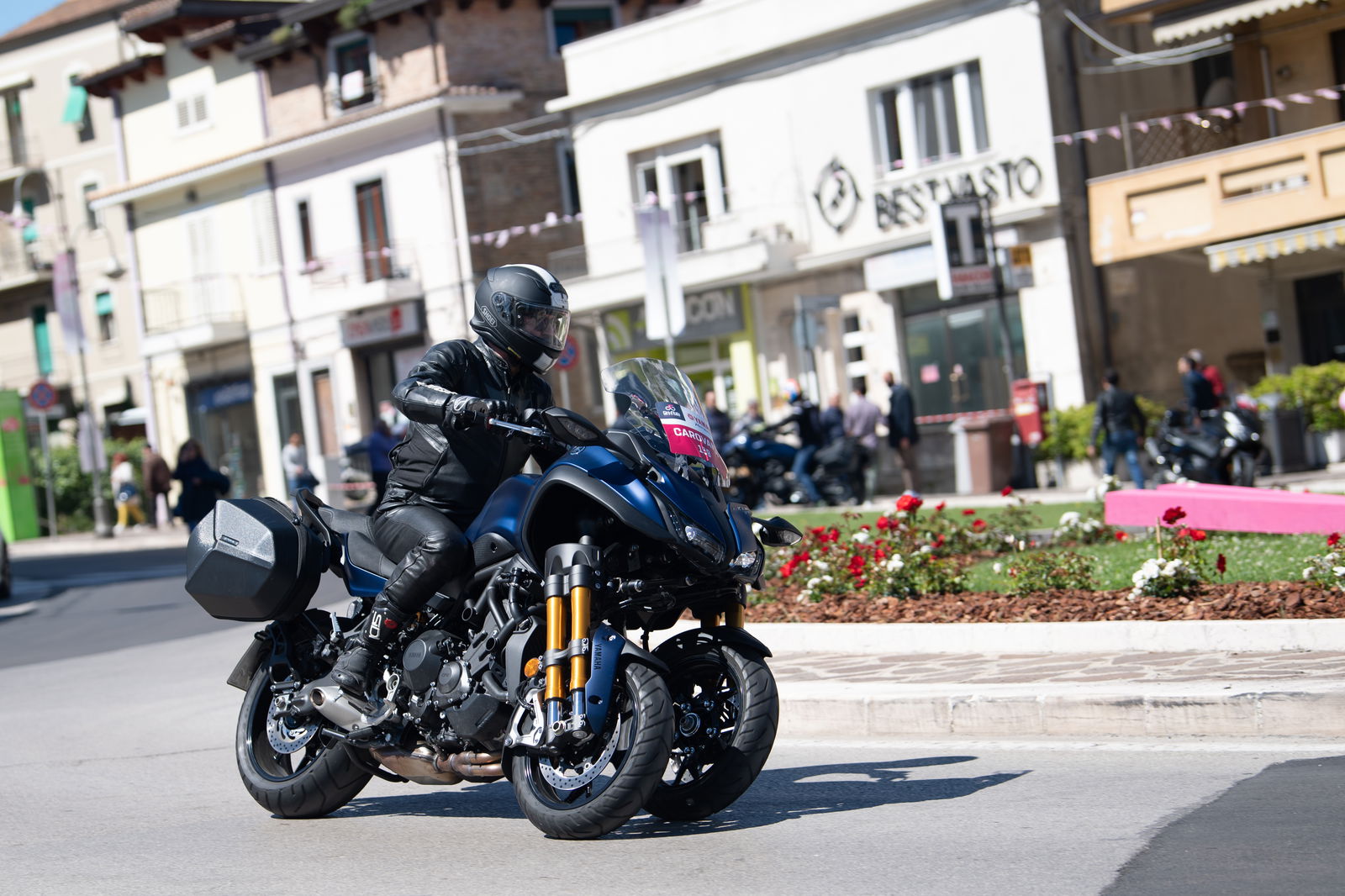
With last year’s NIKEN, and now the NIKEN GT, Yamaha are at it again. Twelve years in development, the LMW concept is some very clever and innovative engineering looking for a niche in a market that embraces niches.
A full explanation of the technology used for LMW can be found here so I don’t propose to go over it again in any great detail. Suffice to say, the NIKEN GT is a sports-touring version of the NIKEN, featuring a slightly different saddle, higher screen, semi-hard luggage and an extra 12V outlet. A few minor tweaks to turn a bike with a kind of identity crisis into a bike with a more specific purpose.
Yamaha are fully aware that the NIKEN was always going to challenge people’s perceptions about what constitutes a motorcycle, and how it would be received by the buying public. We’ve become used to seeing three-wheeled scooters about town, but a performance three-wheeler? That was always going to be a hard sell. And with that in mind, Yamaha are trying to up the public profile of the NIKEN. There are a lot of demo bikes in the dealerships and Yamaha’s PR machine is making sure they get a lot of visibility in the specialist media as well as further afield.

One of those PR pushes was to supply the world of professional cycling with a fleet of NIKEN GTs for use in and around the highest-profile races of the year — the Grand Tours. The Grand Tours are three three-week races (the Tour de France, the Giro d’Italia, and the Vuelta a Espana) covering around 3,500km each and involving around 180 professional racers. The race convoy that accompanies the riders is huge, consisting of dozens of team cars and dozens of motorcycles. These bikes are used by the commissaires (race referees), by race officials, photographers, neutral service (independent mechanics), and for carrying VIP guests (usually sponsors). They are everywhere, and as a result, they get a lot of TV time.
To establish the NIKEN GT’s credentials as a Grand Tour support vehicle, and try it out in a sports-touring role, Visordown was invited to ride one on Stage 7 of the recent Giro d’Italia, a 185km ride along a hilly stage in central Italy, on closed roads just ahead of the race. And as the only man here who knows anything about pro cycling, it was my job not to knock any highly-paid athletes off their bikes or crash a NIKEN GT in front of 800 million viewers worldwide. No pressure, then.

The thing about the NIKEN is that it feels just like any other motorcycle, and yet feels completely different. The apparent contradiction is entirely due to a front end that feels both normal and odd, depending on what you’re doing with it. At low speeds and a gentle pace there is nothing to give away the fact that you’re riding a three-wheeler, it feels just like a normal road bike. But up the ante and it begins to feel different. There is a solid, planted feel to the front end that encourages you to push it harder. The extra 50kg at the front end, and a tyre contact patch 80% larger than with just one 17-inch tyre, gives the NIKEN extraordinary levels of grip and reassurance.
To begin with, I was slightly nervous about pushing the front end too hard, but as the miles roll by you do get used to it. You start to push harder in the turns, worry less about road surfaces, and even relish a bit of rain. Put simply, you can take liberties on the NIKEN that you just can’t do on a conventional two-wheeler. But beware, it isn’t crash-proof, it will throw you in a ditch if you take the piss too much, and just because the front end is gripping tenaciously, that doesn’t mean the back end will necessarily behave itself. The stock tyres are not particularly grippy in themselves, so you may find the back squirming around while the front just gets on and does its thing.
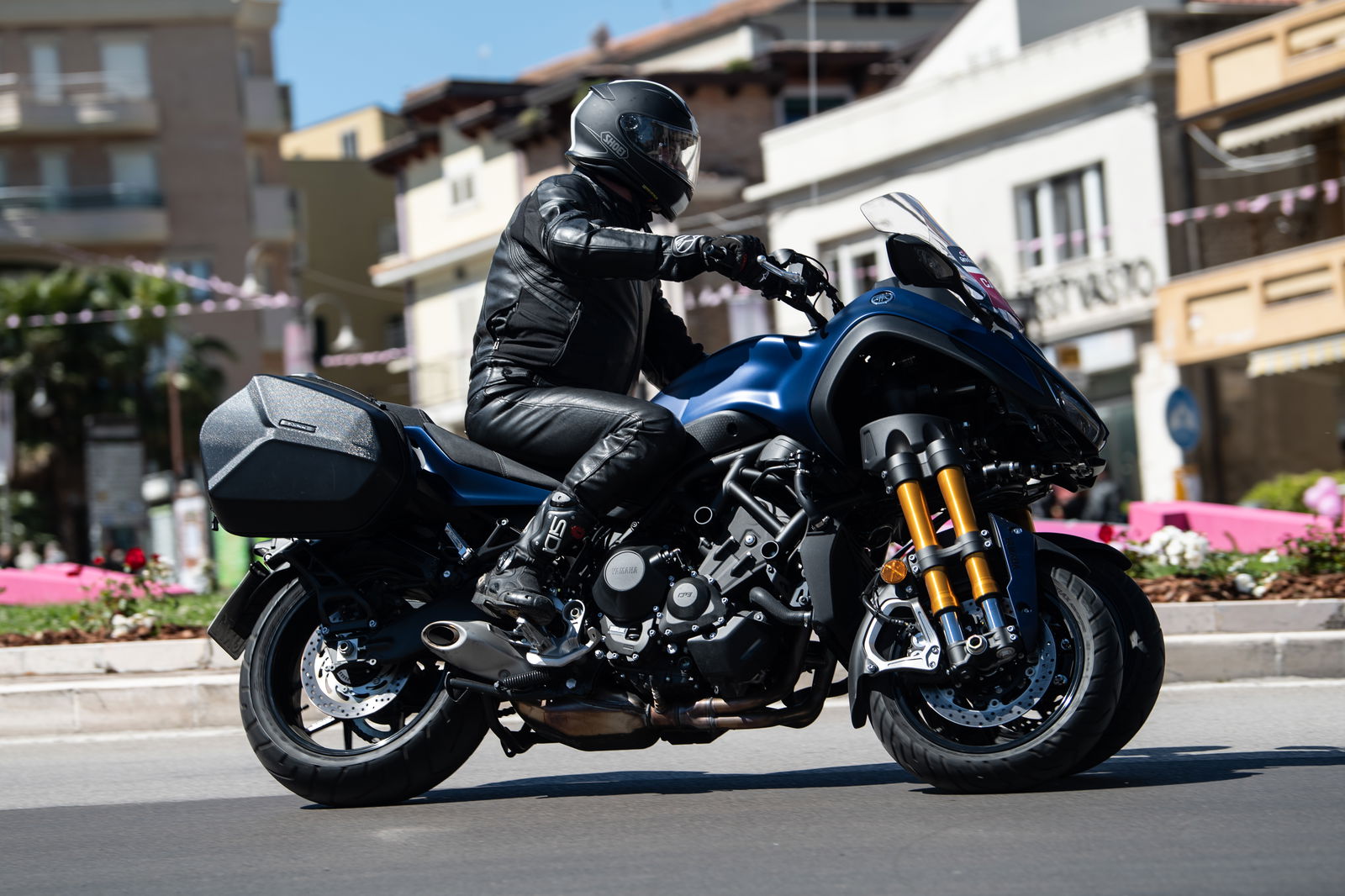
Performance from the slightly tweaked MT09 engine that the NIKEN uses is pretty good, with a decent spread of power and a nicely linear delivery, and despite its fairly high weight, the NIKEN can be flicked through quick corners without too much effort. The extra 50kgs do make themselves felt when it comes to stopping quickly, with the brakes lacking a bit of power and bite.
The original NIKEN seemed to be a bike with an identity crisis. It didn’t seem to know quite what it was supposed to be, and was compromised by a very low screen. The GT version has decided that it’s going to be a sports-tourer and so gets a better screen and some semi-hard luggage. This, it seems, it what the NIKEN should have been all along. And it does its job very well. The screen gives good protection, even to those of us over 6ft, and the luggage can swallow enough stuff for two people touring for a week or more.
There has been some criticism of the luggage, with people saying it’s too flimsy and not waterproof, but I don’t see that as a particular problem. Dry-bags are not a massive inconvenience, and you’re unlikely to be leaving your luggage on your bike long enough for it to be a magnet for thieves. But it is one of the signs that in order to accommodate the expensive front end, costs elsewhere have to be kept down.
The fuel range is another area where the NIKEN GT has come in for some criticism, and rightly so. On a good day you can get 150 miles on a tank-full, but a sports-tourer really should be giving you nearer to 200 miles. Having said that, I usually want to get off anything after a couple of hours and stretch my legs, so the NIKEN GT’s limited range wouldn’t be a significant issue for me.
Riding some fast A-roads in Italy, devoid of any traffic, was an immensely enjoyable experience on the NIKEN, and one that highlighted the GT’s comfort, stability and surprising cornering prowess. As far as being the official support moto for cycling’s top-tier racing, the NIKEN GT fits the bill perfectly: capable of carrying two people in comfort all day long, a stable enough platform from which to dispense water/energy gels/wheels, and secure enough under all conditions to not end up in an embarrassing heap in front of 180 rampaging cyclists. Anyone who watches pro cycling on the TV will have seen numerous moto riders come a cropper, but I didn’t see a single NIKEN on its side.
Until you’ve actually ridden a NIKEN it’s really hard to understand just how extraordinary that front end is. It keeps on gripping long after most “normal” bikes would have given up, and sometimes long after the back end has given up too. It takes most people a certain amount of time to really trust that the NIKEN is actually confounding all you know about tyre grip, but the more you ride it, the better it gets.
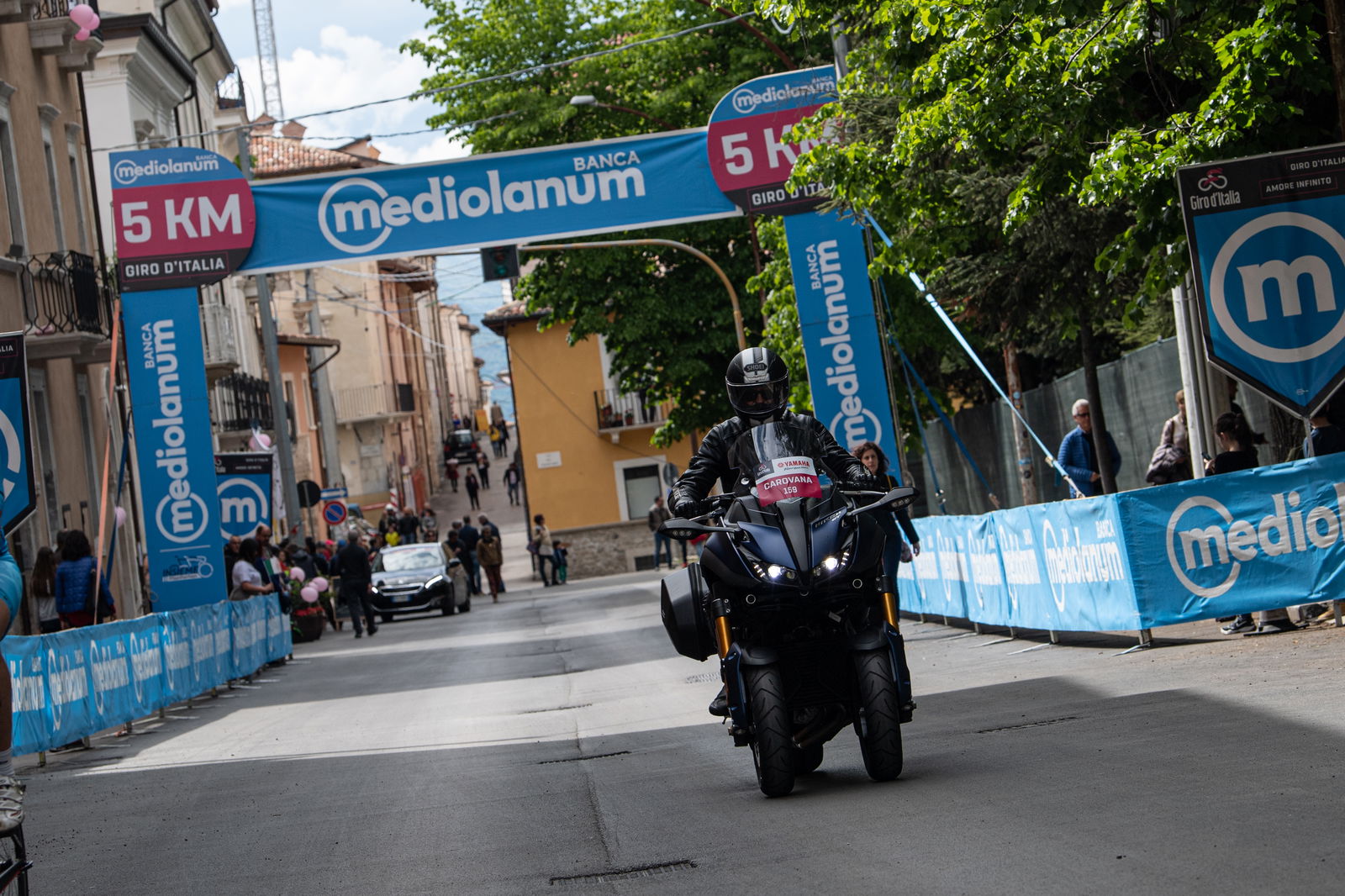
And then there’s the styling. The NIKEN GT is not a thing of beauty. It’s unusual, and eye-catching, but not beautiful. And herein lies another of the NIKEN’s problems — the styling is too radical for traditionalists, and yet not radical enough to appeal to the more adventurous buyers. I happen to like the Transformers styling, and wish Yamaha had taken it a bit further with more angular and futuristic bodywork. People are going to stare and ask questions anyway, so why not make it look properly Judge Dredd or Tron (showing my age there).
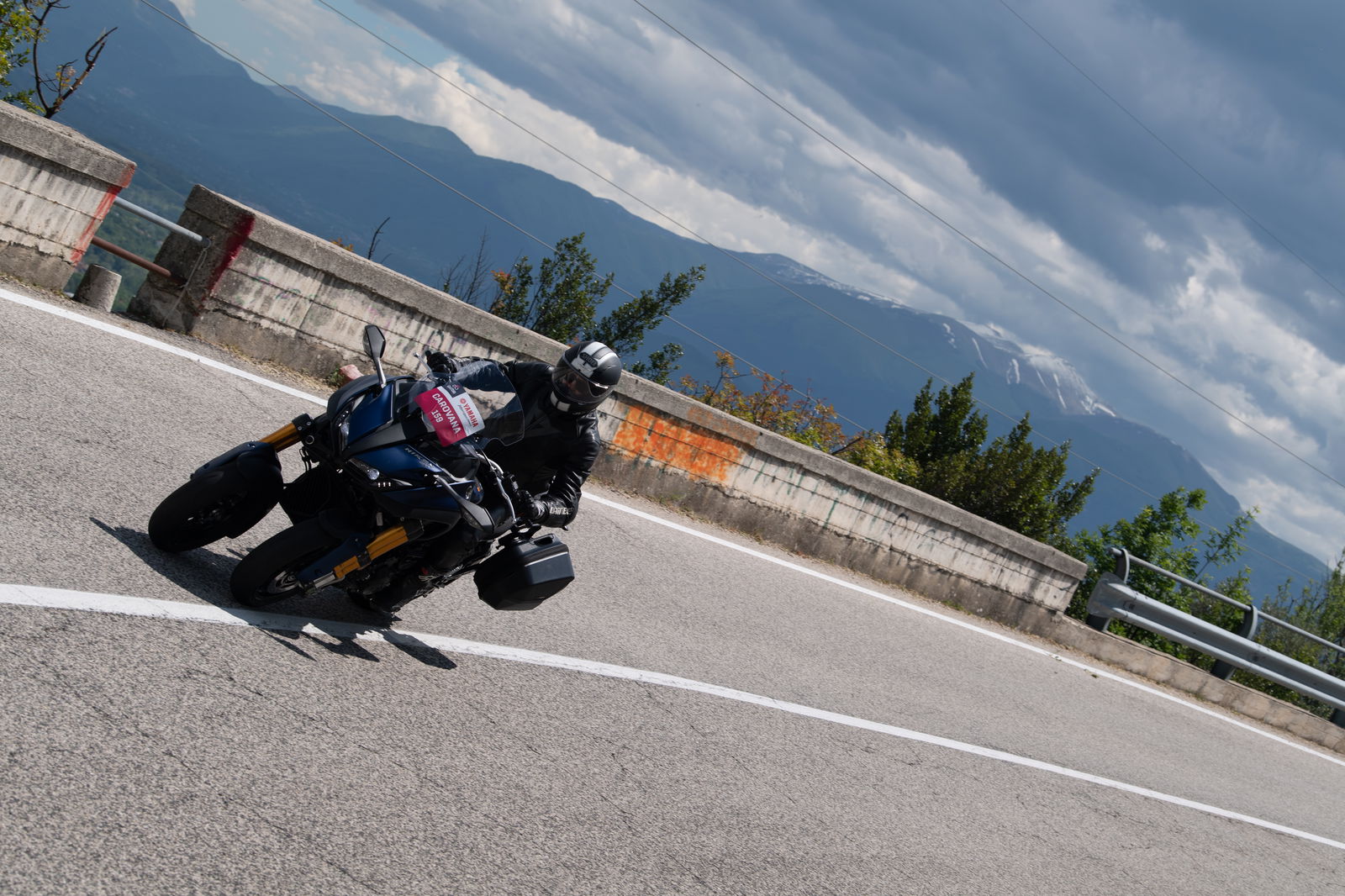
There will be people who wouldn’t dream of owning a NIKEN GT, even if it didn’t cost £14,850. For some, the strange styling and funny front end are just too far removed from what they want. But there will be others who want a bike that will perform well in all weathers, on all surfaces, and are happy with a rather avant-garde bike. Certainly for the officials in cycling’s Grand Tours, the NIKEN GT is pretty much the perfect vehicle from which to run one of sport’s most extraordinary events.
